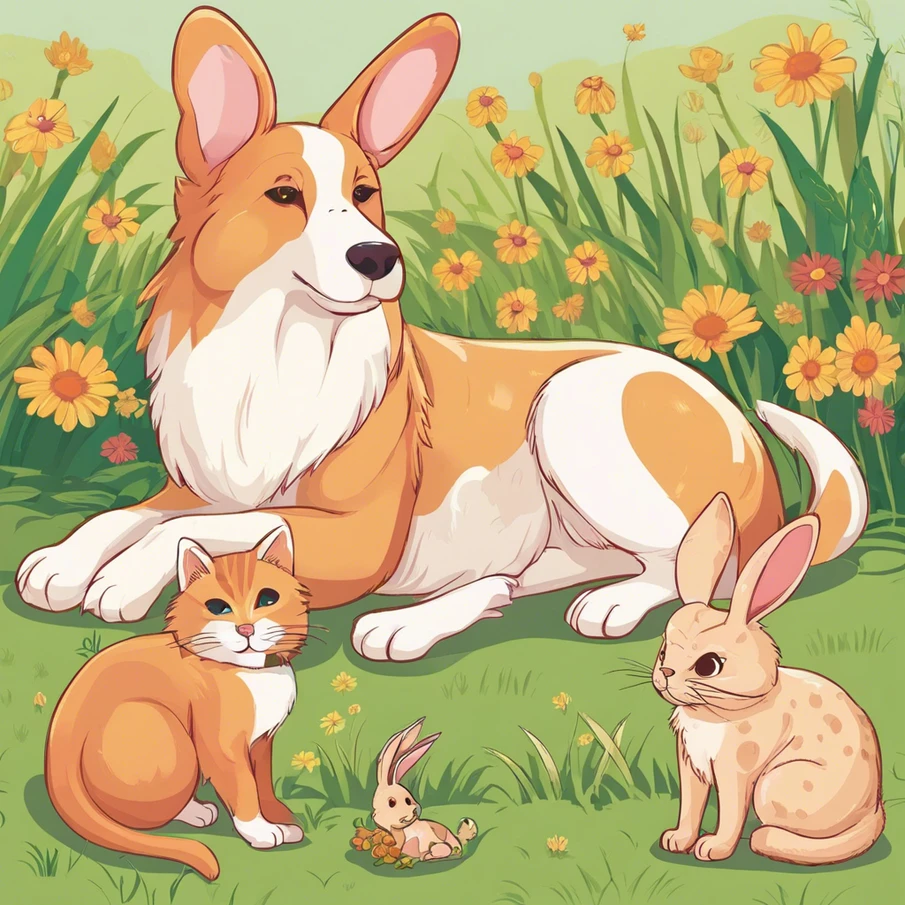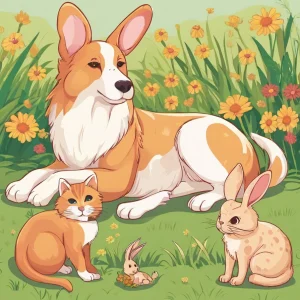I’ve been rescuing pets for as long as I can remember. As a child, I envisioned owning tons of property and saving all the animals from the shelters. My mom was an avid dog lover, and on Saturdays she loved to go for long drives and always managed to find a shelter along the way. Picture me, wee naive kid, thinking how sad it was that no matter where my mom drove there was always an SPCA at the end of the road – little did I know that she had planned out the trip and knew exactly where she was heading. But, despite my mom deliberately driving where a shelter could be found, it became obvious as I grew up that we had an abundance of shelters temporarily housing thousands of pets. I use the word ‘temporarily’ loosely here as, according to a Pet Smart Charities study an estimated 11,000 pets in Canada are euthanized daily – which is about 1/2 of the 8 million pets that find themselves homeless in a shelter each year.
So, my passion to save began
My 1st taste of pet parenting came when my mom drove me to her co-workers property to rescue a 6 month old kitten – if we could catch her. Climbing the tree was easy, but carrying the kitten back down was not. I still remember this lesson each time I see the scar she left on my finger. We brought her back home to our Schnauzer named Pepper. The kitten, now named Salty [Salt n Pepper, get it] and Pepper were NOT best of friends as I had believed they would be. Salty ran upstairs and hid under the bed while Pepper frantically barked and pranced around the room. My mother than closed the door and ordered me to head back down the stair. I was mortified. What if Pepper hurt Salty! My mother said they needed to ‘figure it out for themselves’. Not sure how, but when the door was opened the two of them eventually came out of the room and a great friendship was had. Now obviously this is my childhood memory so there are pieces missing but you get the gist – no human introductory happened.
As I grew older and moved out the one thing I knew for certain was that any further additions into my ‘own’ pack would involve my being there. Not ditzing my momma here, after all her method worked – neither Pepper or Salty were harmed and when we introduced Shakers [ok, c’mon you’ve got to see how creative my naming ability is lol] our Persian kitty my mom left the three of them alone in the home for hours and all, you guessed it, survived. But, for my own sanity and my hearts need for me to remain breathing [bad habit I have of holding my breath when I’m anxious] I make sure that I am present for the intros.
To date I have rescued more than a dozen dogs, multiple cats, a handful of guinea pigs, a turtle, and a few rabbits. Each new introduction is done differently BUT we are always present. In my experience, the best way to do this starts with your understanding your existing pet. Are they friendly towards ALL other animals? Are they selective? Do they chase cats? Birds? Are they easily called off when they are about to chase the squirrel from the yard? Are you bias? No, honestly, are you? No judging you here, I swear. Just want to make sure you are seeing your pet for who they really are and not who you want them to be. So many people, for example, feel their dog is well behaved yet they are looking through rose coloured glasses. There is nothing wrong with this, for the most part – it shows you see your dog with loving eyes. But, when you are wanting to bring another animal into the home, please, be honest with your dogs personality – this is the best way to ensure harmony. If your dog shows signs of prey drive, introducing a kitten can be a very dangerous decision. Now, don’t go getting all defensive here – I am by no means saying all dogs who have prey drive cannot be trusted with a kitten. We have a beagle who has prey drive and she has been able to live a very happy existence with kitty siblings. And by no means am I saying I am an expert, other than my own animals I have never trained an animal as a professional. I also do not have a degree of any kind for animal behavior. What I am is, like you, an animal lover and owner who wants the best outcome possible for ALL involved. In my experience, knowing your existing furbaby is the #1 important rule.
Ok so now that my #1 rule has been spoken about here are a few things that we do in our home when bringing in a new pet:
- if at all possible, we never introduce inside our house. Sometimes this isn’t easily avoided, like when we introduce bunnies [we keep the bunny in a cage and allow the other pets to see them and get a wift of the scent], but for the most part we allow the new animal to be outside when they meet n greet. Our dogs are less likely to be in a protective head zone outside of the home. But we also do not introduce inside their pen either – we move them away from any area they are used to guarding. Currently we have a big property so it is easy to find an area which they hardly ever frequent but when we lived in the city we would do the introductions on the sidewalk, where our dogs were used to seeing other animals. The purpose of this is to remove your existing dogs built in ‘on guard’ mode. Also, if your dog generally is more protective of one person try and have them not be a part of the initial intro. They can be there but in a neutral position, not holding the existing dogs leash or the new animal.
- we generally have the existing dog[s] on a leash. More so that our dog understands who is boss. When they are loose [we live in the country] they are free spirited more and selective hearing can become a thing. You want your dog to respect you in moments of intro’s so it is best if you arm yourself with the advantage a leash offers. Also a much safer introduction as you are in a better position to prevent fights
- we carry treats to offer for good behaviors such as when your existing dog sits when asked. This can help keep them calm
- we only introduce one existing animal to a new pet at a time. When the first one goes well we will bring in another. We currently have a large pack so we find this helpful as our pack tends to stick together and feed off each others energy quickly. Our tribe consists of a variety of sized dogs and our large one thinks they are the protector of the smaller. Introducing one at a time helps stop this
- if we introduce a full grown dog, we will always do the introductions with a walk. We find that our dogs are often busy exploring smells and less attention is given to the new pet. We have found this to be helpful in keeping the excitement level down to a low vibe.
- puppies are much easier to introduce to our medium to large size dogs. They enjoy meeting the ‘smaller’ sized animals the best so we are pretty unrestricted when introducing a puppy as far as our worries go. Our medium to large ones sniff then play and we haven’t had any concerns that there will be issues. But, with our smaller tribe members [our Chihuahuas] even puppies tend to be larger than them and therefore the introductions need to be managed much differently. Firstly we never have the medium to large tribe included in the initial meet n great. This is because our Chis or ‘the littles’ as they are lovingly called have what is known as Big Dog Syndrome and this intensifies when they have their big siblings by their side. Our littles can be very big personality dogs. We need to put more attention into these intros making sure the littles feel safe – these intro’s we found doing them inside the house works best for our guys. They can jump up on the furniture to get away if needed, hide behind one of us where they feel safe. We then allow the new pet to wander and the littles observe, eventually they will venture to sniff. These intros take TIME and patience.
- for us, a full pack together at the same time doesn’t happen within the first hour – 90 minutes.
- cats have been the easiest to introduce to our tribe. Our prey dogs never prey on cats so this has been a blessing in our home. Our biggest dog however did struggle with meeting our kitten who was 4 months old at the time. We kept them separated for months, only allowing them to visually see each other. The design of our home allowed the dog to be able to wander around part of the main floor while the kitten wandered around the remaining portion. The dog would come out on a leash for a few moments each week gradually increasing the time. We used strong outdoor fencing to separate the two of them [admittingly this was not attractive at all] which allowed them both the freedom to move around while giving us the assurance that the dog could not sneak through, plus it was high enough that the kitten could not jump over. Again, it wasn’t pretty but it worked. Eventually we would find them lying together one on each side of the fencing. Then came the kitten pawing through the fence to touch to dog, and then finally the dog licking the kitten. They are now best buddies. Well, except that the kitten who is now 14 months believing he is the biggest ‘dog’ in the tribe but that’s another story.
- Well, now you have it. We have successfully introduced multiple animals into our tribe and also moved our tribe into another dogs home all without incident. My personal opinion is that Our success comes from us knowing each of our existing pets personalities and always having that as our jumping point.
So, how have your introductions went? Let us know in the comments. We would love to hear all about them



